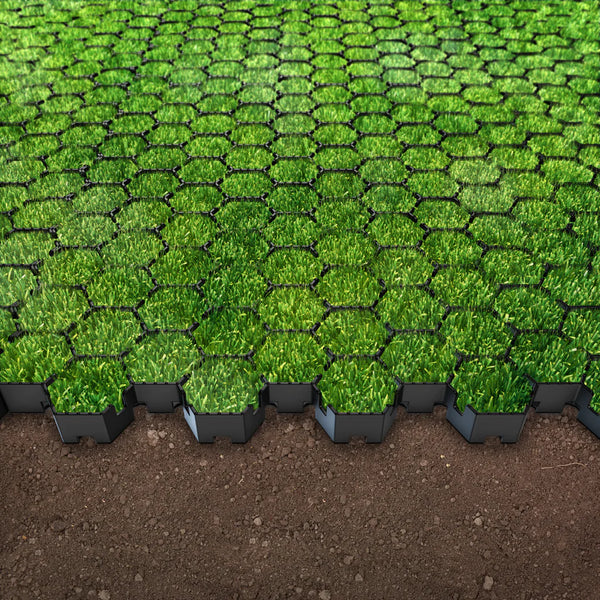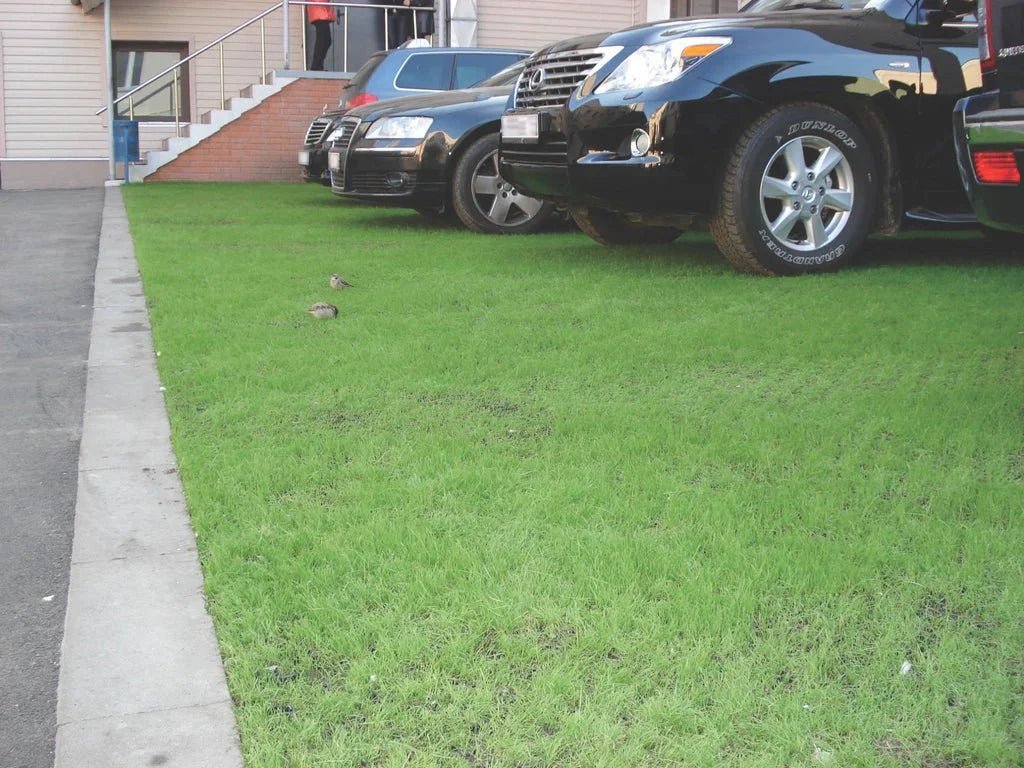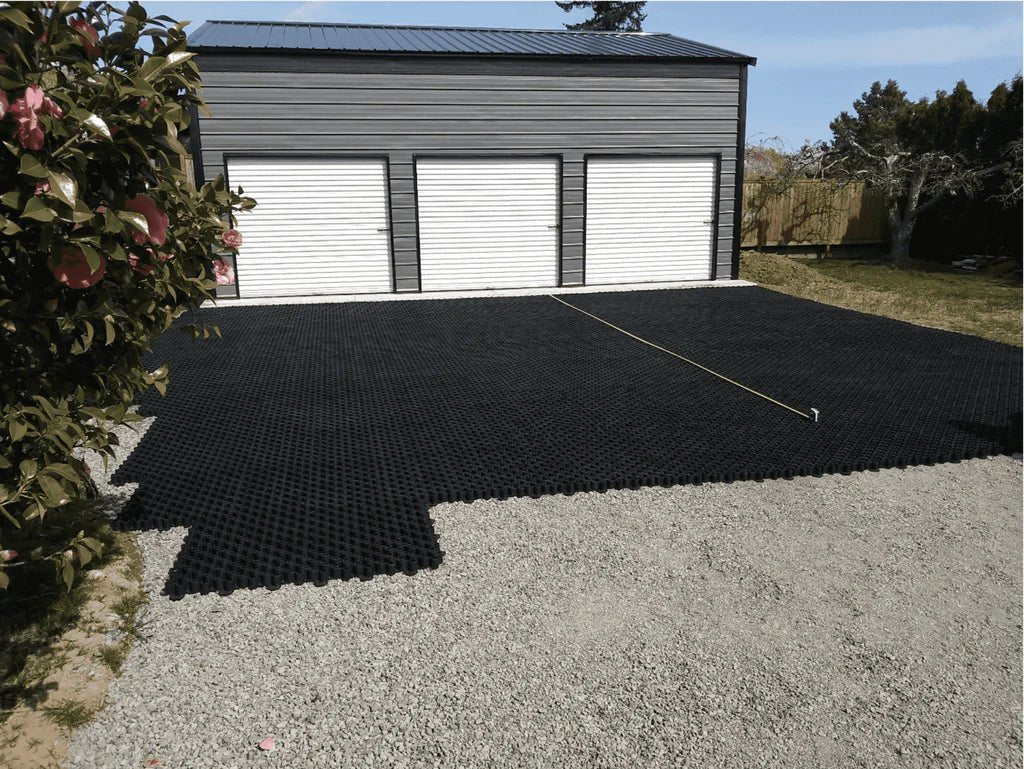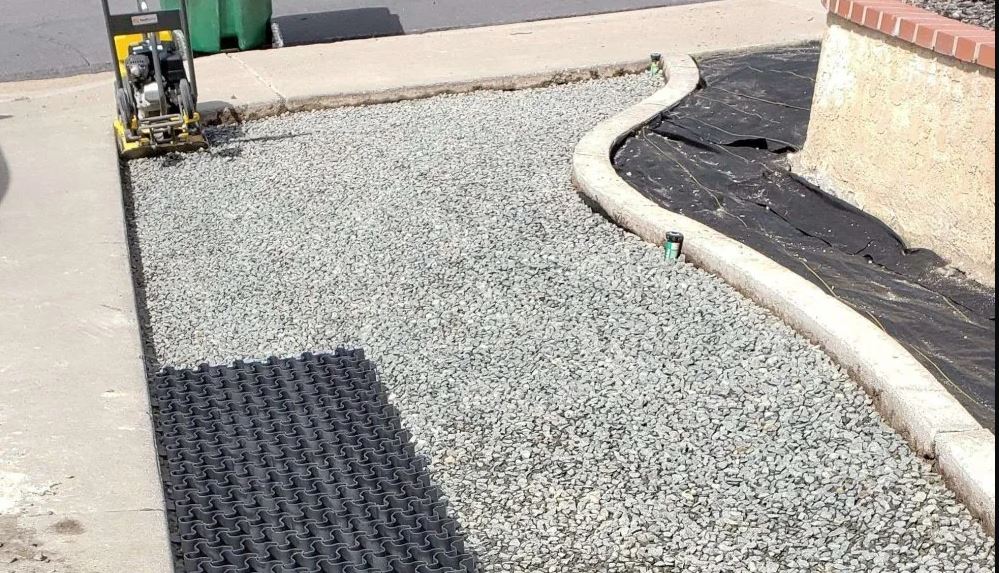In urban development, effective water management is a cornerstone of sustainability. With the rise of environmental consciousness and the emergence of cutting-edge systems, pavement solutions are coming to play a bigger role in creating safe and secure spaces.
In this article, we will dive into the three primary types of pavement solutions on the market: porous, pervious, and permeable pavements. Each offers unique benefits for urban landscapes, and understanding their differences is key to making informed decisions for a sustainable future.
Benefits of Using Pavers for Water Management
Impervious surfaces, such as traditional asphalt pavement or concrete, have long been the standard in urban development. However, they come at an environmental cost, most notably stormwater runoff. Unmitigated stormwater runoff poses several challenges, including:
- Pollution: As stormwater flows over surfaces like roads, parking lots, and roofs, it picks up pollutants including oil, grease, chemicals, metals, and sediment. This contaminated runoff often flows directly into waterways without treatment, degrading water quality and harming aquatic ecosystems.
- Flooding and Erosion: The increased volume and speed of runoff can lead to flooding, which damages property and infrastructure. It also intensifies erosion along rivers and streams, altering habitats and increasing sedimentation in water bodies.
- Overburdened Sewer Systems: In many cities, stormwater is managed by combined sewer systems, which also handle sewage. During heavy rainfall, these systems can become overwhelmed, leading to the discharge of untreated sewage.
- Heat Island Effect: Impervious surfaces absorb and retain heat, contributing to higher temperatures in urban areas compared to surrounding rural areas. This can exacerbate the effects of heatwaves, increasing energy use for cooling and impacting human health.
Enter the game changers: porous, pervious, and permeable pavements. These innovative solutions allow water to pass through or around them, mitigating runoff and promoting groundwater recharge. Their adoption marks a significant step towards sustainable urban development, with benefits like reduced flooding risk and a decrease in the need for extensive drainage systems.
Permeable, Pervious and Porous Pavement Solutions
Now let's take a closer look at each of these three solutions :
Pervious Pavements
Pervious concrete, distinct from its porous and permeable counterparts, is specifically designed to allow water to percolate through its surface. Its composition lacks the fine particles found in traditional concrete, creating a network of voids for water to pass through.
This makes pervious pavements an excellent choice for areas where direct groundwater recharge is necessary, such as in green spaces and around trees in urban settings. Their ability to reduce runoff while supporting ground breathing and root growth sets them apart.
Porous Pavement
Porous asphalt pavements come in various designs and materials, including concrete and plastic. These pavers are typically part of a cellular grid system filled with materials like dirt, sand, gravel, or grass that allows water to filter through the pavement itself into the soil beneath. This system not only supports loads from above but also aids in soil stabilization and permeability. The interconnected cellular structure of porous pavers allows for an even distribution of weight, reduces soil compaction, and addresses stormwater management.
Porous pavements are particularly suited for larger areas like parking lots, parks, low-traffic roads, where their ability to handle significant amounts of water without compromising surface integrity is invaluable.
Permeable Pavement
Permeable pavers, often composed of concrete or clay brick, are separated by joints filled with crushed aggregate. Unlike pervious and porous pavers, water in permeable paving systems is directed around the paver, rather than through it.
This method of water management involves guiding rainwater to the joints between the pavers, where it then infiltrates the underlying layers. Aesthetically pleasing and architecturally versatile, particularly when it comes to permeable interlocking concrete pavers, modern permeable pavers can withstand both light and heavy traffic. As such, they are a popular choice for a variety of settings, from pedestrian walkways to parking areas.
How Vodaland is Revolutionizing Permeable Pavement Surfaces

Vodaland is at the forefront of revolutionizing modern interlocking pavers, combining the best aspects of porous, pervious, and permeable pavements to create effective systems. Our EasyPave and HexPave products are innovative examples of efficient water management solutions.
Our EasyPave Grass & Gravel Driveway Grid is a robust system designed for high load-bearing capacity. Its unique "S" turn grid design further enhances its strength and durability, making it ideal for heavy-duty applications like driveways and parking lots. The grid's air and permeability features allow for natural water infiltration and erosion control, which promotes a healthier ecosystem.
With its distinctive design, our HexPave Grass & Gravel Paving System offers not only aesthetic appeal but also functional superiority. The grip and hold technology ensures stability on slopes, making it perfect for landscaped areas and walking paths. The system's high permeability facilitates effective stormwater management while reducing runoff and pollution.
Let's Create a More Sustainable Future Together
Whether it’s the water-filtering capabilities of porous asphalt, the direct water infiltration of pervious concrete, or the water management of permeable pavements, these solutions are transforming our urban landscapes.
Selecting the right pavement solution is not just a matter of environmental responsibility; it's a strategic choice for long-term sustainability.
What to learn more about pavers? Check out our resources like how to install permeable pavers on a driveway and more!



Leave a comment
This site is protected by hCaptcha and the hCaptcha Privacy Policy and Terms of Service apply.